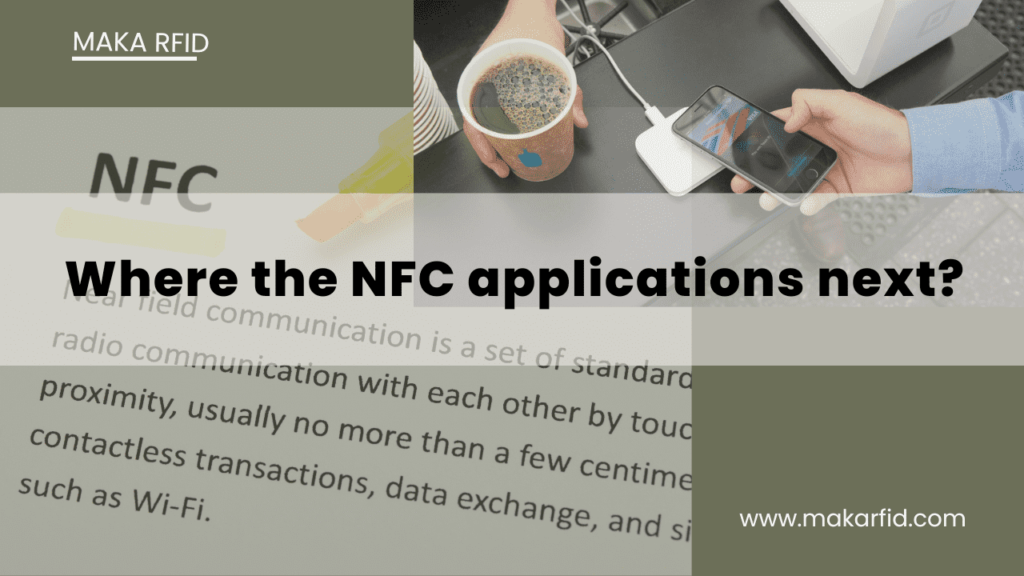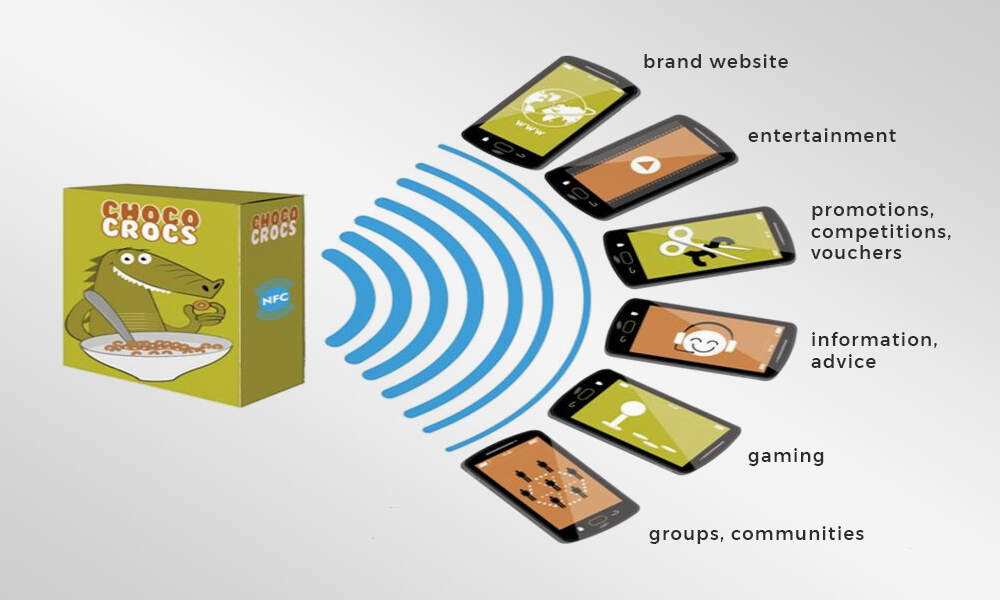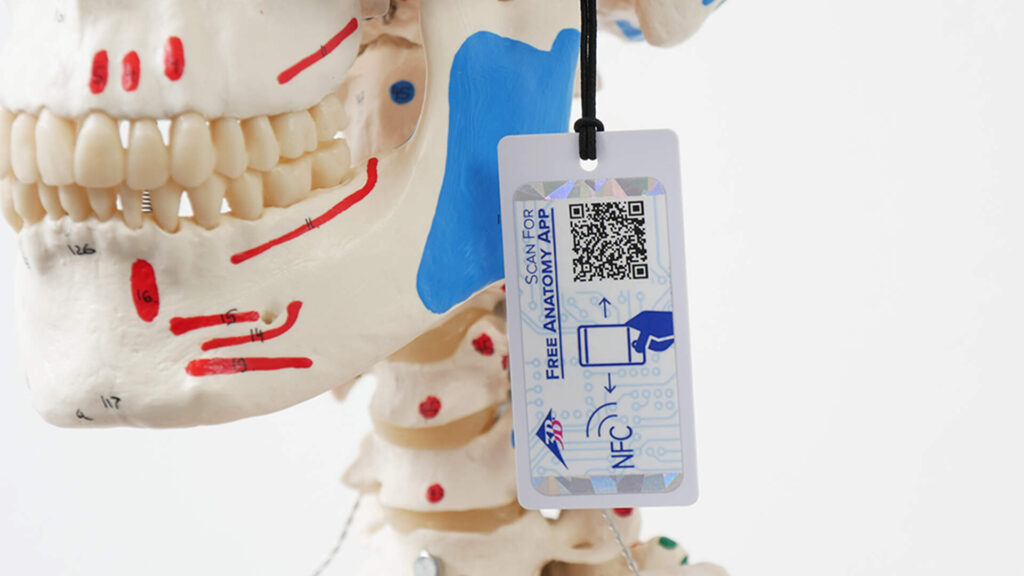
Which applications dominate the NFC market and which are growing the fastest?
Among the NFC market segments, the applications in the fields of mobile payment, smart home, IoT and healthcare are all showing extensive and rapid growth trends. Among them, healthcare, smart home and IoT applications show the most prominent growth.
For example, in the field of healthcare, some enterprises use NFC tags for the inventory of medical supplies and the wake-up and pairing of wearable medical devices. NFC wireless charging, which has emerged in the past two years, helps miniaturized wearable devices add NFC functionality so that they can be charged wirelessly, thus enhancing user experience and increasing functionality.
With the rapid development of the Internet of Things (IoT), Near Field Communication (NFC) technology has gradually become the core of connecting IoT. From mobile payment to smart door locks, from medical devices to logistics management, the wide application of NFC has made our lives more convenient. Today, we will focus on the latest developments in the NFC technology market and start looking for new ways to use NFC in our daily affairs. We can see that the application scenarios of NFC in sports, medical care, tourism, advertising, fitness and Wellness and other fields are gradually being tapped.
Currently, the NFC market covers a wide range of application scenarios such as automotive, POS, wearables, medical, door locks, industrial and toys. Many market functions of touch-connected products are realized through NFC, which is an advantage of NFC technology. Taking a common laptop as an example, users can transfer files and execute some commands by touching their phone to the laptop or printer. The underlying logic of this function is realized by establishing a connection through NFC. By adding NFC tags or dynamic tags to the device, specific functions can be triggered via the NFC protocol. The touch connectivity feature can be considered as a function of near field communication, with the advantage that the pairing is very clear, enabling less interference and more efficiency in one-to-one product pairing.
What competing technologies does NFC face in the current market environment?
A variety of different technologies are suitable for different application scenarios. In general, the following technologies can achieve similar functionality to NFC:
- QR Code (QR Code) technology: QR Code technology realizes information transmission by scanning the QR code, but the operation is relatively cumbersome as it needs to be scanned.
- UHF RFID technology: UHF RFID is also a wireless communication technology, which has a longer transmission distance, but is relatively power-consuming and requires a dedicated reader/writer for operation.
However, NFC is still favored due to its wide applicability, convenience and security. With the popularization of NFC functionality on smartphones, NFC technology has become more accessible. In many application scenarios, NFC interaction can be realized without a special NFC reader or writer with just a smartphone.
After years of development, what factors are needed to promote the application of NFC technology?
The popularization of NFC technology requires a number of factors. These include the increased penetration of smartphones, which makes it easier for NFC technology to be widely adopted; the reduced cost of NFC chips, which promotes the popularity of NFC integration in products; and the combination of various wireless technology standards with NFC, which enables more convenient network formation.
Over the years, NFC technology has been exploring new application areas and enriching its usage scenarios. Sometimes, NFC technology plays a key role in unseen places, such as anti-counterfeiting verification of electric toothbrush brush heads and NFC wireless charging of smart wearable devices. With the popularization of NFC technology, the number of related application areas is increasing. With the continuous expansion of the market, NFC technology has penetrated into various fields such as consumer, industrial, medical, etc., realizing convenience.
NFC can be connected with cell phones, so many cell phone apps applying NFC have appeared.
With the wide popularity of NFC function on smartphones, more and more mobile apps greatly enrich the application areas of NFC technology. For example, blockchain technology solutions combining mobile apps and NFC technology can provide more secure product anti-counterfeiting and traceability. At the same time, mobile apps can also be used to read NFC sensor data and understand the history of environmental parameters, facilitating applications such as cold chain.
Some toy manufacturers are also actively developing applications to build NFC tags into toys to enrich toy play and incorporate educational elements for fun and education.
Where is the future market for NFC?
In the past two years, by the impact of the epidemic, cell phones and other consumer markets have been affected, the NFC market is no exception. However, from the perspective of the tag market, its growth rate is still maintained at about 20%, with an annual shipment of about 500 million. As the epidemic subsides, the NFC market will usher in a new rise, so where exactly are the driving forces that will propel the NFC future market?
Currently, more and more smart products are starting to use wireless connection, and the pairing problem will be encountered in the connection process. Although the pairing operation itself is not complicated, but NFC can realize the experience of a touch that is connected, which undoubtedly greatly enhance the security and intelligence of the product, but also has a cost advantage. In the future, with the continued development of the Internet of Things, the demand for one-touch connectivity will increase.

In the anti-counterfeiting field, NFC can also play its advantages. For example, in air purifiers and drinking water purifiers, data transmission between the cartridge and the purifier can be carried out through NFC technology to achieve reliable authentication for anti-counterfeiting, thus improving the quality of life.
In the field of automotive electronics, we can see that ST and other major international manufacturers are vigorously promoting keyless solutions and center control WPC applications. When the key runs out of power, NFC can be used as the last opening solution, which is a just-needed market.
In addition, the wireless charging function of NFC will be widely used in the future in the market of stylus, wrist blood pressure monitor, hearing aid, smart watch, electric toothbrush and so on.
NFC Applications in Automotive
Probably the best-known application of NFC in automotive is smart door locks or keyless door opening, including low-power Bluetooth (BLE) and ultra-wideband (UWB). For this application, the advantage of NFC is that the car can still communicate with its smartphone even when its battery is depleted. This means that the car can still be recognized even if the phone’s battery appears to be depleted.
In addition to car door locks, NFC has other applications in cars. For starters, it’s a simple and secure way to connect your phone to your car’s entertainment center. Instead of laborious Bluetooth pairing, you can easily connect a passenger’s phone to the car’s audio system by simply holding the phone close to the car’s dashboard.
NFC not only takes the burden off the driver, but also helps mechanics and auto technicians diagnose and fix problems. As the number of electronic devices and embedded processors used in vehicles increases, NFC-enabled phones can be used to display error codes and diagnostic information.
Battery management in electric vehicles is critical to maintaining battery life and maximizing storage capacity as well as range. Nodes containing NFC devices and other sensors can collect environmental information that affects the battery, such as temperature, humidity, and pressure. The node can then record this data in its EEPROM and transmit it wirelessly to a secure NFC reader/writer within its coverage area.

NFC in Healthcare
Wearable technology relies heavily on NFC tags for the exchange of fitness-related information. Fitness apps collect data from wearables and track sleep patterns, calories burned, heart rate and other metrics in real time. All major fitness bands use NFC as the underlying technology to improve the user experience and become part of everyday life.
In addition, hospitals and medical device manufacturers are using NFC tags. NFC tags sealed on medical packaging can help doctors and caregivers check dosage information and prescriptions using their smartphones. Caregivers can monitor patients’ vital signs and ensure the safe delivery of authentic medications.
Prescriptions written by physicians can also be stored in NFC tags. Many pharmaceutical companies and organizations are already using NFC-powered smart drug tags to store expiration dates, dosage information, authenticity information and more.
NFC in Advertising and Marketing
Global companies are utilizing NFC products to target specific audience segments to bring them closer. As an example, Nike introduced NFC-enabled jerseys in 2017 in order to increase sales and customer engagement. People have to tap the jersey’s tag with their phone to get all the updates. These jerseys give customers access to the latest game highlights, scores, stats, and exclusive content from the brand or favorite players.
KFC is also utilizing NFC to enhance its brand image through smart billboards and posters. Users who tap on the posters with their smartphones receive the latest deals and discounts as a way to thank them for choosing KFC over other brands.
NFC in Retail
The retail industry has been using NFC for contactless mobile payments. But in retail, the use of NFC goes beyond payments. Retailers use NFC tags to share product information, offer discounts and in-store marketing campaigns, etc. NFC is also being used for brand protection and authenticity verification, with the small tags helping luxury brands, pharmaceuticals, and food companies to deal with counterfeiting issues. nfc tag stickers can be configured with authentication links and codes to check the authenticity of a product.
NFC in Escape Games
NFC technology can be used to effectively activate mechanisms in escape room sequences. For example, an NFC tag can be placed at a location and when the player touches the tag with a prop, it triggers a mechanism that opens a door or reveals a clue.
NFC in Business Management
NFC tags can be used to track the activities of employees such as cleaners or security guards without relying on manual log entry. The system can record when an employee is present in a specific location at a specific time, making it easier to understand employee performance and actions.
NFC in sports and events
NFC tags work well in sports such as orienteering, where athletes can use their smartphones rather than the often very expensive devices and tracking systems to access information about their location, timing them while confirming their position. At sporting events, NFC tags are particularly useful where GPS doesn’t work. 2018 FIFA World Cup Russia officials tried for the first time to implant an NFC chip in a match ball, with sensors in the chip monitoring the soccer ball’s speed, spin, strikes, and flight paths and transmitting the data to a smartphone connected to it to give match-goers access to more interactive information, creating the official ball that stunned the crowd Telstar 18.

A growing number of brands are increasing their investment in NFC
A growing number of brand executives are recognizing the importance of NFC technology in building consumer connections and are planning to increase their investment in the technology in the future, according to the latest Connectivity Experience Report released by UK-based company SharpEnd.
SharpEnd’s report reveals several key trends in the use of NFC technology in branded packaging. First, 85% of brands plan to increase their investment in connected products in the next 12 months, indicating that NFC technology is becoming an important part of a brand’s marketing strategy. Additionally, 96% of brands consider connected packaging to be an important part of their marketing strategy, while 92% consider first-party data to be a key pillar of their marketing strategy.
NFC (Near Field Communication) is an RFID (Radio Frequency Identification) based wireless connectivity technology that enables contactless communication between readers and tags. Tags are small electronic components that add wireless connectivity to physical objects, such as luxury goods, including clothing, footwear, bags, watches, jewelry, perfume bottles and more. Adding an NFC tag connects them to the digital world.
Adopting NFC technology helps brands track their products globally, ensure their authenticity, and establish a direct two-way communication channel with consumers through NFC-enabled smartphones.
With NFC tags, brands configure personalized content (e.g., origin, brand website URL, etc.), which consumers can access by simply tapping the tag with their smartphones.
With traceability, companies can use NFC technology to verify that products equipped with NFC tags are following the entire supply chain process as intended.
Brands can create value-added digital experiences with NFC tags, such as providing product information, augmented reality content, or direct links to a brand’s loyalty program. This enhanced interactivity not only enhances the consumer buying experience, but also helps brands collect first-party data to better understand consumer behavior and preferences.
NFC technology enables products to enjoy digital marketing advantages
Secure and easy to use, NFC tags can be easily configured with personalized content (e.g., authentication, product information, etc.), which can be accessed by consumers by simply tapping the tag with their smartphones. By providing product information (e.g., origin, fabric), personalized shopping advice, and details of sustainability initiatives (e.g., where to recycle or donate gently used clothes), NFC technology helps fashion brands establish a direct line of communication with their customers.
The applications of NFC technology go beyond this, as it can also be used to organize recycling of used goods: by installing NFC readers in company containers and adding NFC tags to garments, fashion brands can keep track of their own goods and measure the impact of recycling initiatives.
The use of NFC technology in branded packaging is growing rapidly, offering brands the opportunity to connect with consumers on a deeper level. As consumer demand for personalized experiences and sustainability continues to rise, NFC technology is expected to become an integral part of a brand’s marketing strategy. Brands need to capitalize on this trend and leverage NFC technology to create unique consumer experiences while ensuring their sustainability efforts are authentic.

